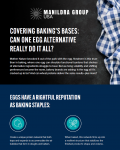Investing in the Future of Food: Patient capital can give entrepreneurs a leg-up when seeking VC funds
“The VC model is broken,” according to Alicia Robb, the CEO of Next Wave Impact Fund, which focuses on early-stage investing and promoting an innovative learning-by-doing progress fund model.
She explained to FoodNavigator-USA that the current VC model “is one that if you make 10 investments, you expect eight to go belly up and fail, one to maybe return your capital or have a little bit of a return, and then one to be a homerun or a unicorn.”
But this approach, while popular because of the high rewards it can reap on that one-in-10 investment, “is pretty destructive,” in that it hurts founders, employees and communities who support the young businesses.
“Nobody wins with eight failures. So, I feel like we need to take another look at the venture capital model where we accept such destruction in the market,” she said.
‘Stop looking for unicorns’
One option, she said, “is to stop looking for unicorns.”
Instead, she said she would like to see more investors take interest in “zebras,” or companies that may not yield 100x returns, but which, if fostered, will still make beneficial returns not just to investors but also to the industry and entrepreneurs' communities.
She explained that this strategy doesn’t preclude investing in high-risk high-reward companies or limit the number of potential investors. Rather, she said she believes that investing in “zebras” would likely require fewer follow-on rounds, which would free up capital to invest in still more companies – including unicorns.
Entrepreneurs should consider ‘patient capital’
Robb also encourages entrepreneurs to consider other financing options – especially if they are still in the development phase or have a long horizon on returns.
Specifically, she points to philanthropic capital, or patient capital, and other non-dilutive funding, such as grants, as strong options for companies that are still developing a minimum viable product.
In particular, she encourages entrepreneurs to look at Small Business Innovation Research funding coordinated by the US Small Business Administration with the intention to help small businesses conduct research and development.
“The SBIR programs is one government funding source that a lot of companies are not even aware of,” she said.
And yet, it offers many benefits beyond the immediate influx of capital, according to Robb, who explained that “investors love companies that have been funded by the SBIR grants, because it is non-dilutive and so they have actually been basically subsidized to get to the point where the investors are ready for them.”



















